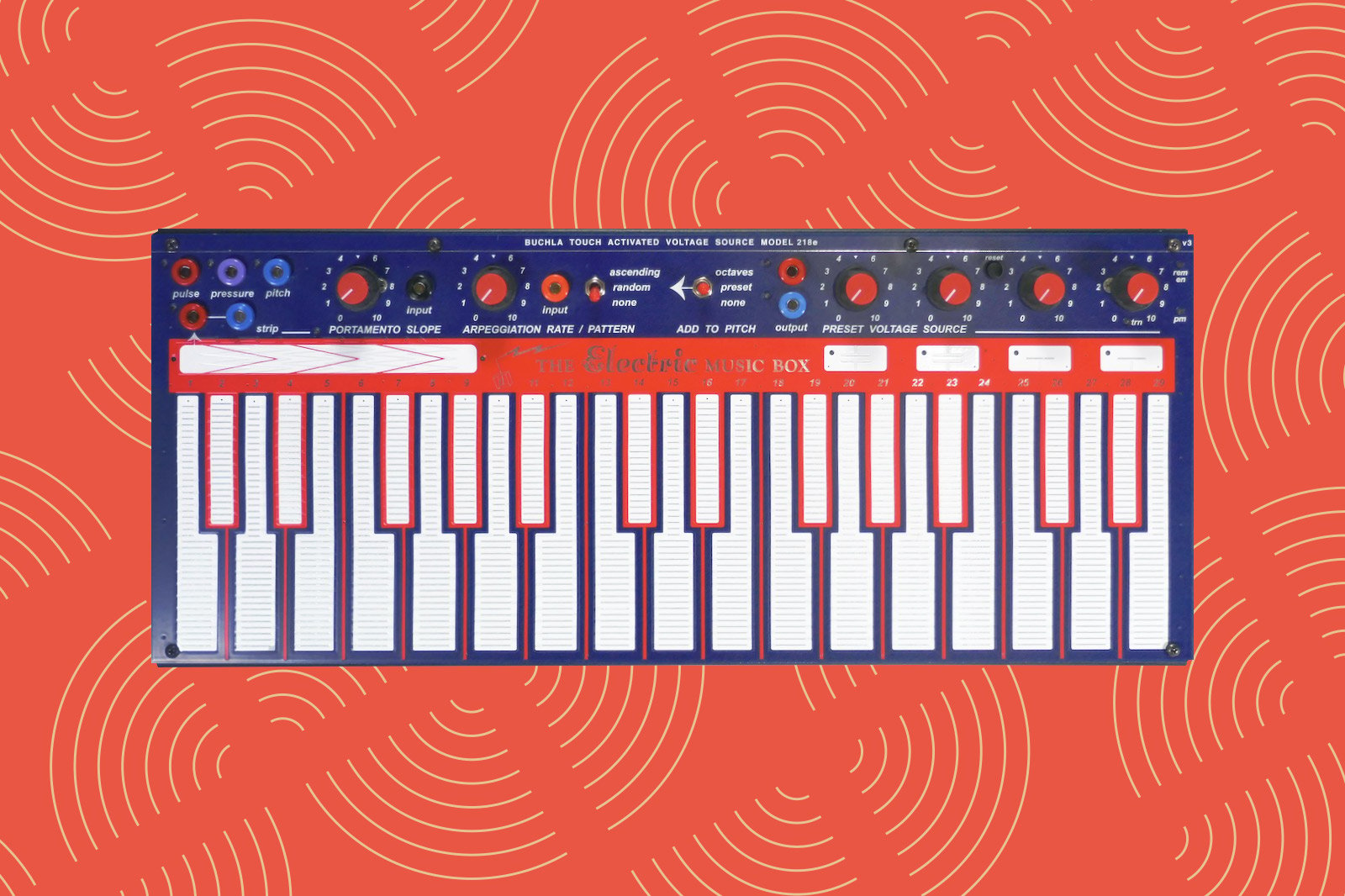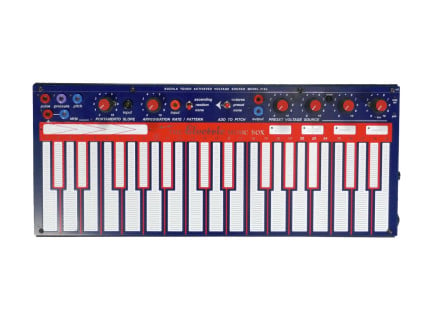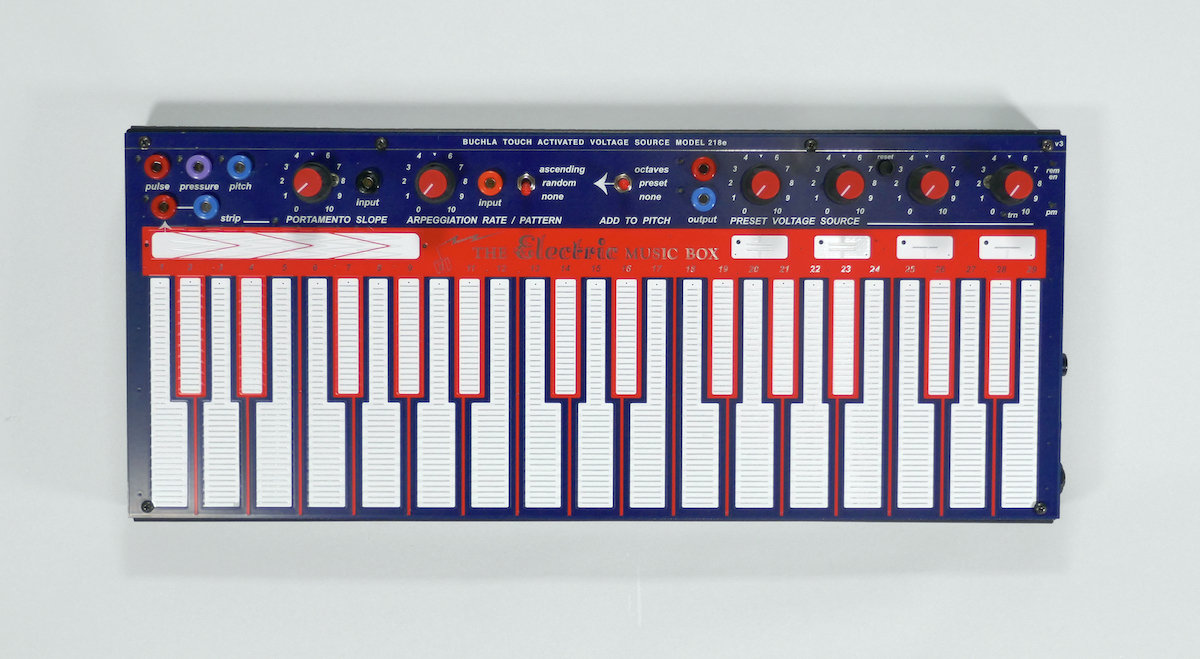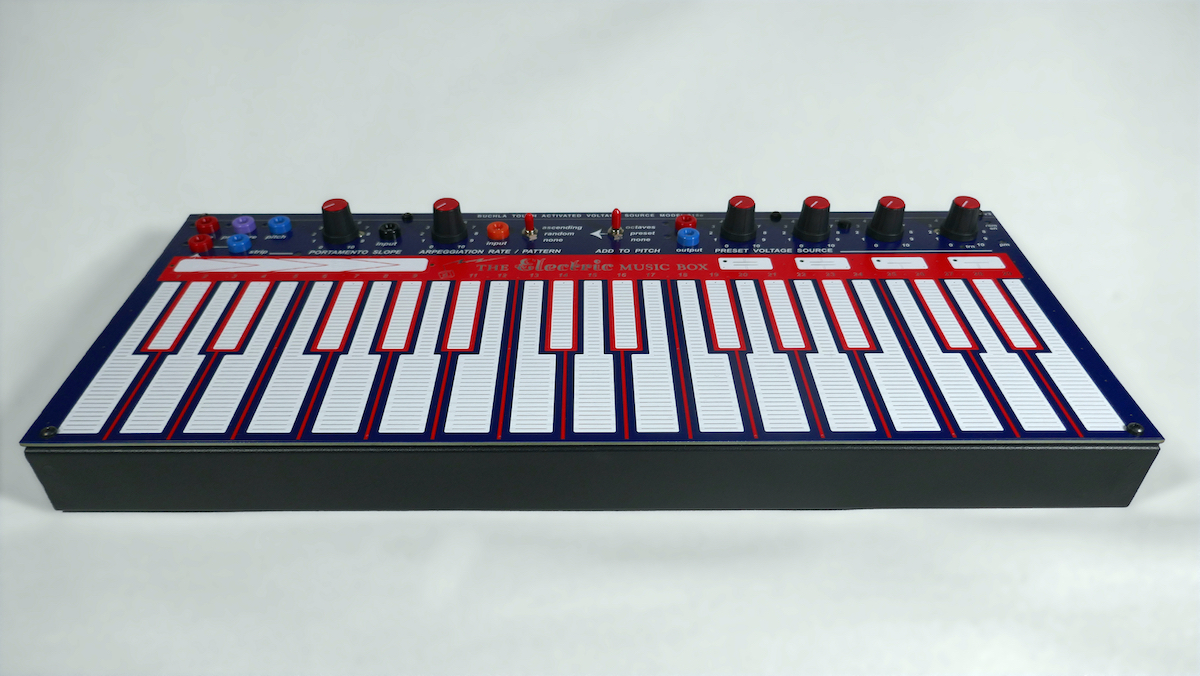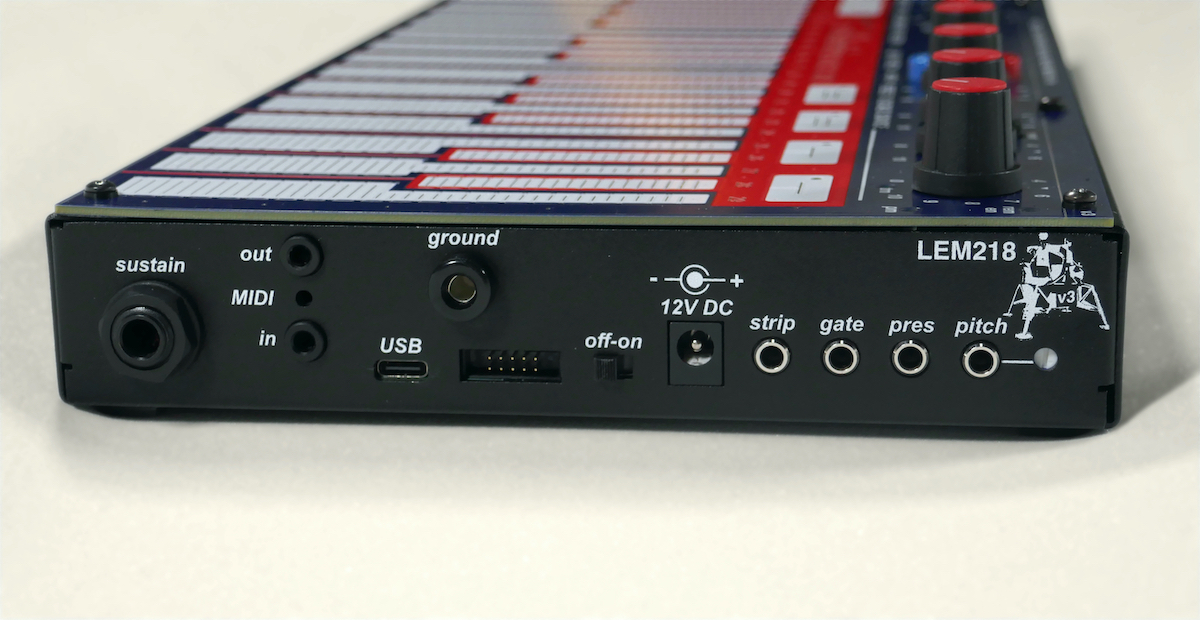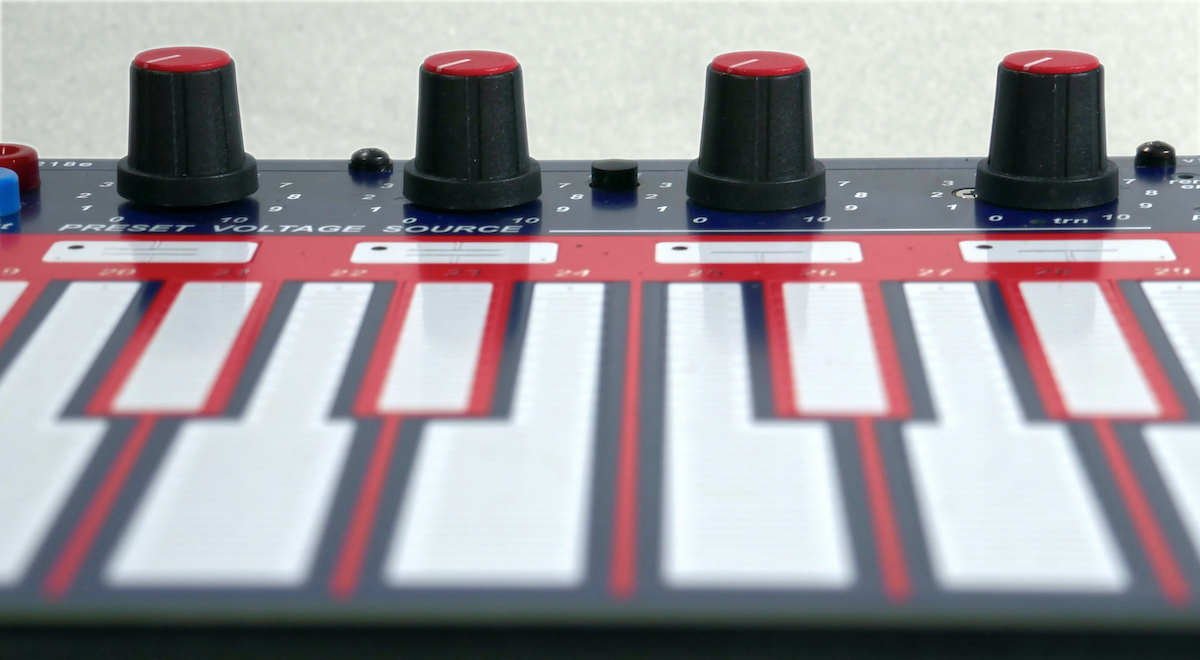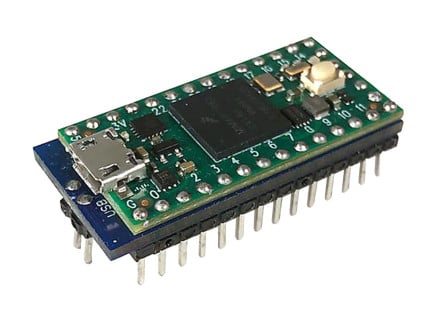Today, Buchla USA introduced the world to LEM218 v3: their newest controller, and the much-anticipated touch plate keyboard companion to the Easel Command desktop module. Many an Easel Command owner have been waiting for this announcement. In many eyes, this controller completes the "Music Easel" package, turning the Easel Command into a self-sufficient, fully-thought-out instrument for experimental sonic exploration.
Of course, many modern additions/tweaks to the 218 and Easel Command turn this combo into a quite different instrument than the original Music Easel—one that suits modern expectations for connectivity and immediacy while retaining much of the distinctly peculiar ethos of the original Buchla design.
However, LEM218 v3 is more than just a companion for the Easel Command. In addition to its front-panel CV outputs, it offers multiple CV/gate outputs for use with Eurorack systems, an internal bus connection for Buchla 200e systems, and perhaps best of all, it's a fully-featured polyphonic MIDI controller. So, if you're a Buchla owner looking for a new way of interacting with your instrument, or if you need a creative and expressive way of controlling your Eurorack system, your desktop synths, or even your computer—LEM218 might be able to help.
In some ways, the LEM218 v3 can be seen as a spinoff of multiple related design trends in Don Buchla's original instruments. In this article, we'll take a quick look at some of Don Buchla's own designs and their intent, and then we'll move on to a closer look at LEM218 v3 itself.
Experimental Control for Experimental Instruments
Don Buchla famously invented some of the earliest modular synthesizer systems—and in the years following this initial invention, he developed a reputation for creating esoteric devices for the exploration of experimental electronic music. We'll skim over the deeper parts of his history and legacy in this article. If you're curious for more background, I'd recommend checking out our articles East Coast Synthesis vs. West Coast Synthesis and its follow-up, What is West Coast Synthesis...Really?, which detail the development of the many legends that surround his life story, along with details about how many of his instruments worked.
For the sake of this article, though, it's important to note that Don Buchla was, perhaps more so than any contemporary instrument designer, deeply concerned with the nature of the human-machine interaction. As such, all of his instruments presented a unique take not only on how sounds could be made, but on how a performer/composer might interact with sound. This took many forms, from brainwave detection to bizarre uses of radio technology and more...but the experimental user input method we most commonly associate with his instruments is, of course, the capacitive touch plate keyboard.
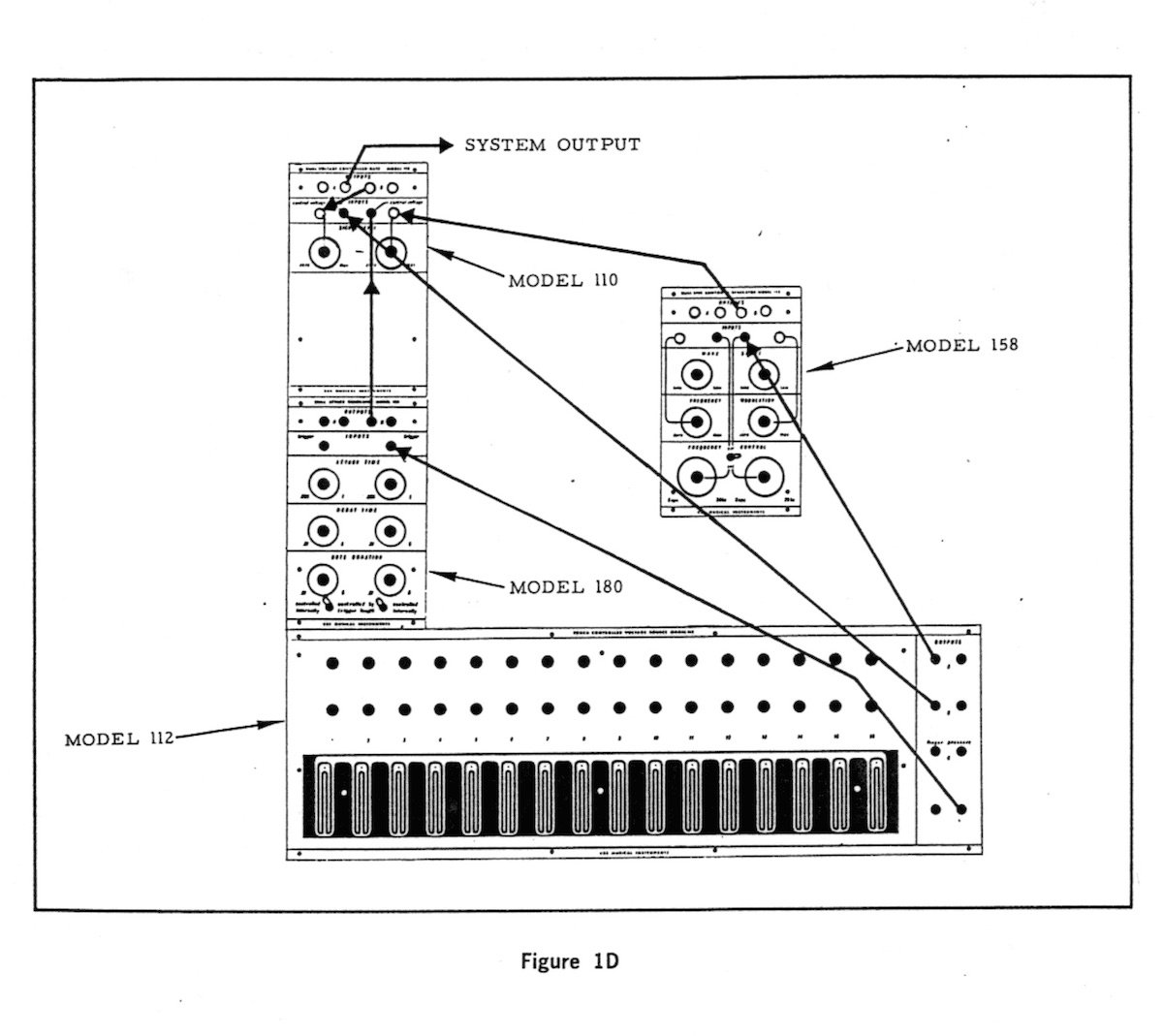
In the 1960s, there were very few precedents for how an electronic instrument should be interacted with—and as such, when Buchla designed his first instruments, there was no assumption that they needed a traditional user interface. Instead, Buchla's first instruments used "pressure"-sensitive touch plates for a number of purposes...from keyboard-like behavior to the gating, starting, and stopping of tape playback.
Buchla took this idea farther in the 1970s 200 Series—perhaps his best-known generation of instruments. In addition to some relatively abstract approaches to touch plate keyboard design (similar to those in the earlier 100 Series), the 200 Series also saw the release of several controller designs more oriented toward traditional keyboard technique. Famously, the 200 Series introduced multiple capacitive touch plate keyboard designs that more or less took the shape of a conventional 12-tone-per-octave, black-and-white keyboard note array. Today, if there's a single Buchla touch plate controller that most are familiar with...it's probably the 218 Touch Activated Voltage Source.
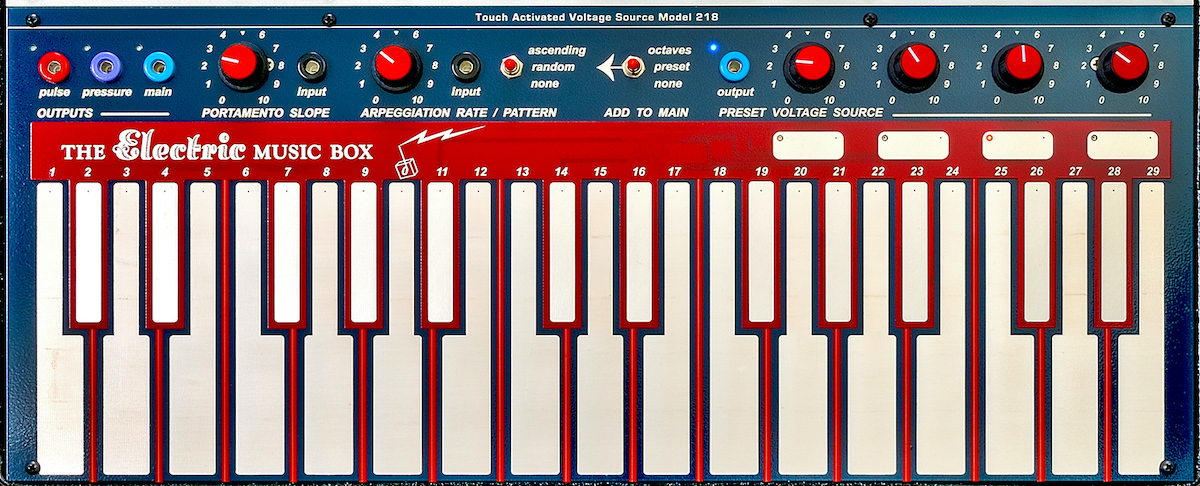
The 218 most commonly appeared as the touch control portion of the Music Easel—a now fairly iconic Buchla instrument from the early–mid-1970s (an image of a modern 218 facsimile produced by Buchla Electronic Musical Instruments can be seen above). The Music Easel was comprised of two modules: the aforementioned 218, and the 208 Stored Program Sound Source, a sort of all-in-one module that contained many key sound and CV-generation components behind a single panel, arranged in semi-modular fashion. The 218 acted as a primary playing interface, with pulse, pressure, and pitch CV outputs that could be plugged directly into corresponding input busses on the 208 itself. In addition to the basic pressure-sensitive note array, the 218 featured a portamento generator, as well as a three-key Preset Voltage Source, which could either be used to transpose the keyboard or, alternatively, could act as an independent, arbitrarily-tunable, 3-key keyboard all its own.
Of course, these were not Buchla's final forays into capacitive touch plate keyboard designs—the later 400, 700, Thunder, and 200e systems all presented their own unique perspectives on how programmable capacitive touch sensors could be used to interface a human with electronic sound generation structures.
Frankly, I could write volumes about Don Buchla's use of capacitive touch sensing, and perhaps one day I will...but this isn't quite the right place to get into the details or design considerations of any of Don's more peculiar inventions. Suffice to say, for the moment, that this way of thinking and this way of structuring user interaction in electronic instruments has become deeply influential. Designs ranging from Serge's 1970s TKB all the way to Make Noise's Pressure Points and 0-Ctrl, and Arturia's Microfreak all point to Don's work as an influence...and that's just naming a few. The idea of a pressure/position-sensing keyboard is an ideal still being pursued by MPE controller manufacturers and other...and Don Buchla started that work way back in the 1960s. In the current day, many instrument makers and many musicians owe a lot to him and his work.
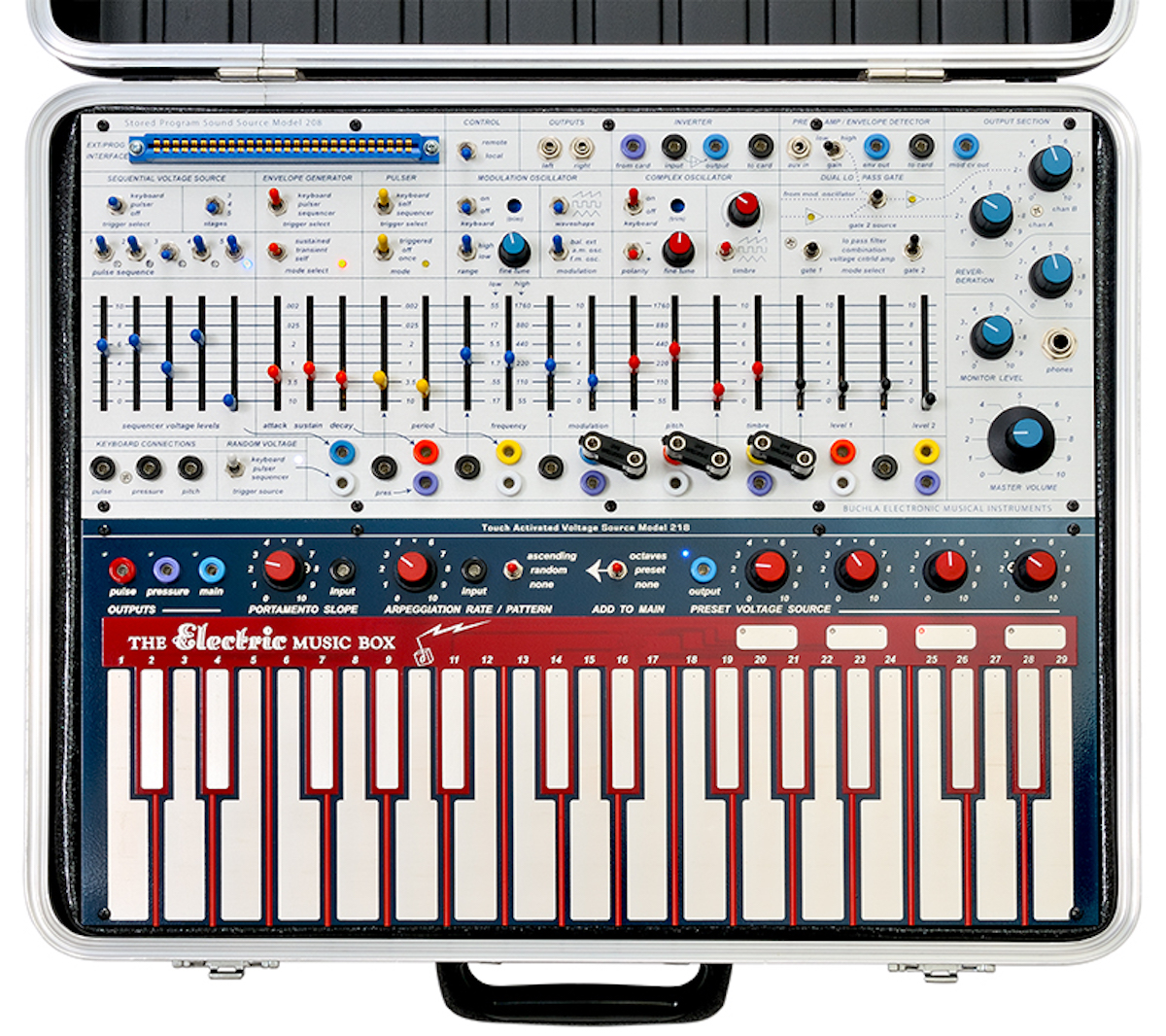
In 2013, of course, the company Buchla Electronic Musical Instruments (BEMI) produced a modified version of the original Music Easel, including an update to the 218 touch keyboard (seen above). The BEMI 218, however, was notoriously finnicky and difficult to produce—and shortly after the new company Buchla USA took over production, the Music Easel as such and the new 218 were discontinued. Buchla USA eventually introduced the world to the 208c and the Easel Command, a new take on the Easel's voice module designed by long-time Buchla collaborator Joel Davel, complete with MIDI input, USB MIDI hosting, and Eurorack CV/Gate inputs. While the Easel Command is likely the most easily available directly Buchla-derived instrument of all time, its introduction led many to wonder...would there ever be a new incarnation of the 218?
Buchla LEM218 v3 Overview
LEM218 v3 is the newest release from Buchla USA—inspired by multiple designs by Don Buchla and directly modeled after the BEMI 218. Astute followers will note that BEMI's 218 was available in both 4U/200e modular format and as a standalone device with Buchla and Eurorack CV outputs as well as MIDI output—and happily, the new model from Buchla USA maintains all of these features and more.
LEM218 v3 combines the new 218e module with a dedicated housing and power supply, making it a self-sufficient controller without the need for a Buchla modular system. Of course, you could always remove the 218e from this housing to install in your Buchla system...but as it is, the standalone LEM package is perfectly capable of interfacing directly with computers, MIDI-capable hardware, Eurorack modules, Buchla systems, and basically anything you could plug a controller into. Let's take a look at each individual section.
The most obvious part? The array of 29 touch plates arranged in a keyboard-like array. This is the device's primary playing interface, and part of its programming interface. The keys produce, in typical Buchla fashion, pulse, pitch, and pressure CV outputs on the top panel via banana jacks, as well as 3.5mm Eurorack gate, 1V/oct pitch CV, and pressure CV outputs. As with the original 218, a portamento control may be used to add glide between notes...even including a CV input for the glide time. LEM218 v3 also includes an arpeggiator, which may be set to ascending or random patterns or, via the "edit mode," an additional "directed random" pattern. This arpeggiator is responsible for much of what one might consider the "modern Music Easel" sound—think Kaitlyn Aurelia Smith and you'll know what I mean.
The Preset Voltage Source, like on the original 218, can be used to transpose the keyboard output voltage by fixed octave amounts or by entirely arbitrary intervals. As with prior iterations, the Preset Voltage Source does have a dedicated CV output, but in this version, it adds a dedicated pulse output, turning it into a fully-featured four-pad keyboard.
The new 218e includes a touch strip on the left-hand side of the controller (with a design strikingly similar to the vintage Buchla 217), with its own pulse and position CV outputs. That's an interesting addition—in effect, it makes it such that the 218e is really comprised of three completely distinct controllers: the keyboard, the strip, and the Preset Voltage Source. Like the keyboard, the strip even has its own Eurorack CV output, making it a great pairing for your non-Buchla modular gear. Moreover, if used with an Easel Command, this means you'll get access to multiple sources of expressive control simultaneously: you're free to route the Preset Voltage Source and strip to anything in the system. Heck, you could even plug the strip straight into the keyboard CV and Pulse bus inputs for ribbon-controlled synth tones while you use the keyboard + arpeggiator to pseudo-sequence some aspect of the sound other than pitch. Pretty wild. It even has a dedicated 3.5mm CV output on the side panel for use with external devices.
Much of what makes the new LEM218 v3 interesting, from our perspective, isn't immediately obvious from the front panel. Namely, it isn't just another capacitive touch plate modular synth controller...it's also a surprisingly well-appointed MIDI controller, with both USB-C and 3.5mm MIDI connections (and an included TRS-DIN adapter).
Perhaps the most obvious usage is as a keyboard controller: the LEM218 v3 can produce MIDI note data either monophonically or polyphonically, and the arpeggiator can be used to send MIDI information as well. Though perhaps not as obvious, the other control sources can produce MIDI data as well. The touch strip can send a selectable MIDI CC or pitch bend. The preset voltage source can be used to send CC values as well (sending the appropriate CC value for the currently selected knob/preset voltage). Interestingly, when the "Add to Pitch" function is set to "none," the preset voltage source pads also send MIDI notes 0–3 on channel 16. When used in conjunction with an appropriately configurable MIDI to CV converter or software, this could be quite useful.
There are a number of other "hidden settings" that some players may find of use, all accessible via the "Edit Mode." Edit Mode is entered/exited by holding the first two preset voltage pads for two seconds (note that these two pads have a pattern distinct from the third and fourth, making it a bit easier to remember this particular key combo). When in edit mode, you can do a number of things: change the transmitted MIDI channel, change the touch strip and preset voltage source CCs, toggle "Remote Mode" for 200e systems, add slew to the touch strip, alter the strip pitch bend range, alter the keyboard sensitivity, and more.
LEM218's obvious appeal for most will be its potential as a partner for the Easel Command. Honestly, though, it's looking like quite an interesting controller for more or less anything. We'd be interested to see how it feels alongside a desktop polysynth, or as a controller for your computer or iPad, or as a fully-featured controller for a Make Noise 0-Coast or other semi-modular gear. There's a lot of potential, and we're curious to see how people will choose to use it.
Get in Touch
I'm used to thinking of "Buchla" as a person, and not as a company. Of course, Don Buchla is no longer with us, and was not directly involved in the design of LEM218 v3—nor the Easel Command, for that matter. We're still in a time period where the transition from "Buchla the person" to "Buchla, a company" feels strange to me. New "Buchla" instruments are no longer devices designed by that person: they're instruments inspired by his life's work, modeled after and building on the many ideas he left behind.
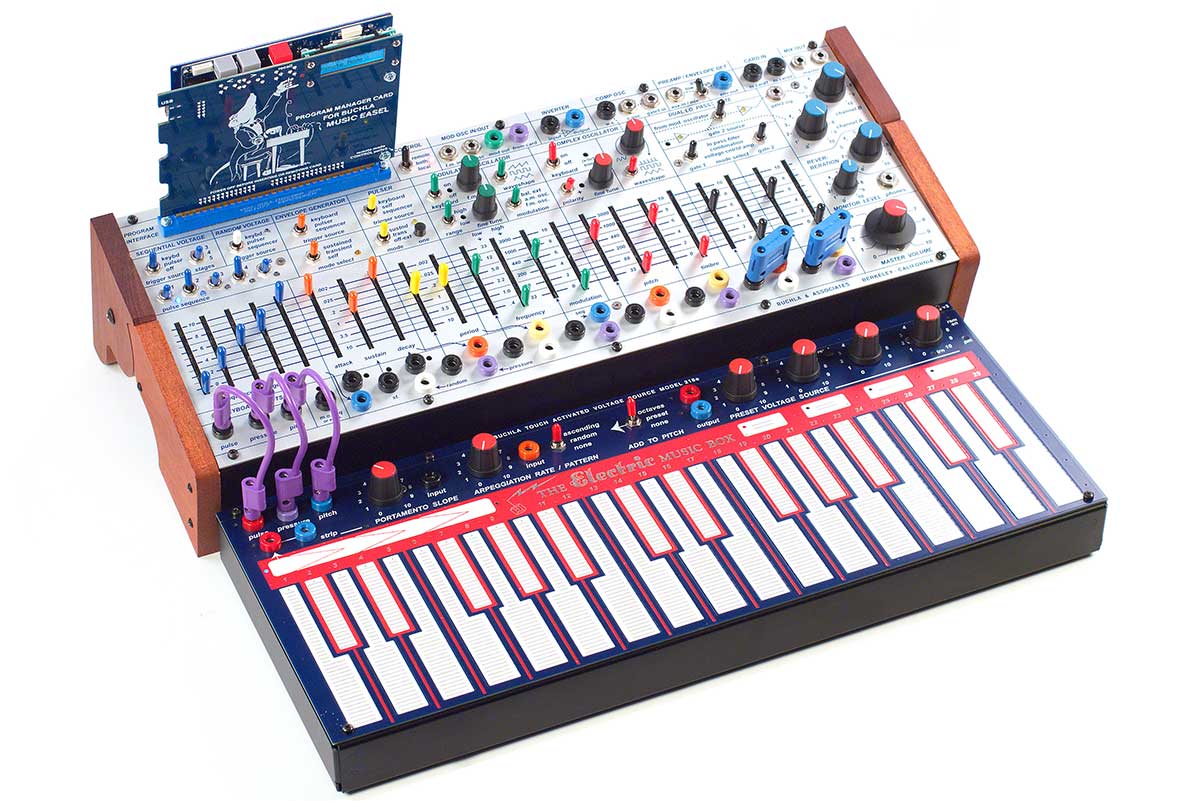
That said, when assessed simply for what it is? The LEM218 v3 is a clever, powerful, and completely unique offering among current controller options. It is designed to interface with basically any type of electronic music gear currently available, and as such, it hypothetically could have a place in any electronic musician's setup. It is highly responsive, and offers many ways of interacting with sound all in a single, self-contained package. And best of all, all of its performance possibilities are fairly removed from the "typical," go-to methods of electronic music performance...so no matter your preferred method of sound-making or your gear of choice, you have the ability to explore several new methods of interacting with sound. That is an inspiring idea.
So, are you looking for a controller literally designed for use with the Easel Command? Looking for a new way to perform expressively with your soft synths? Looking for several new ways of interacting with your desktop semi-modular gear or Eurorack system? LEM218 v3 can do all of this and more.

